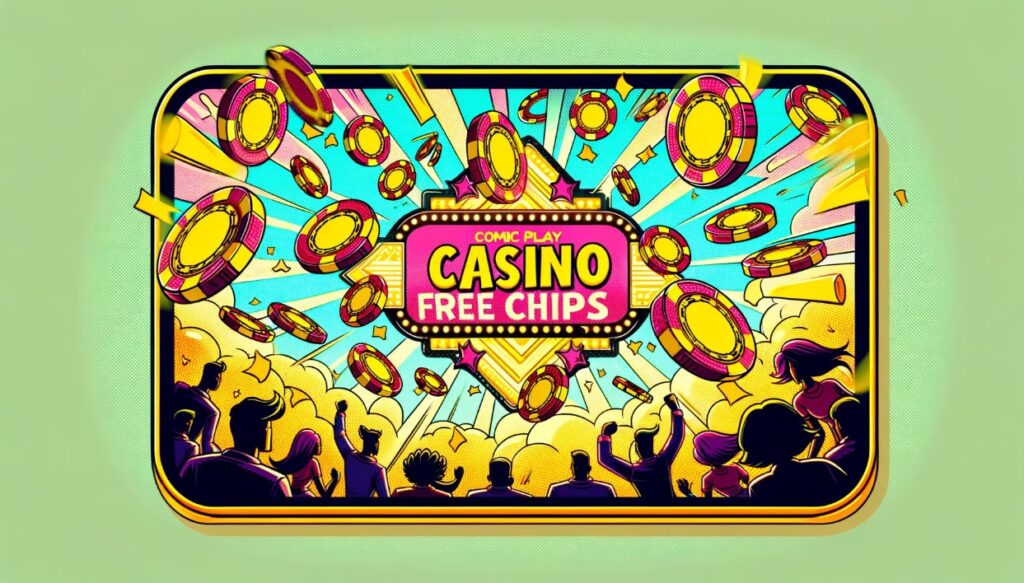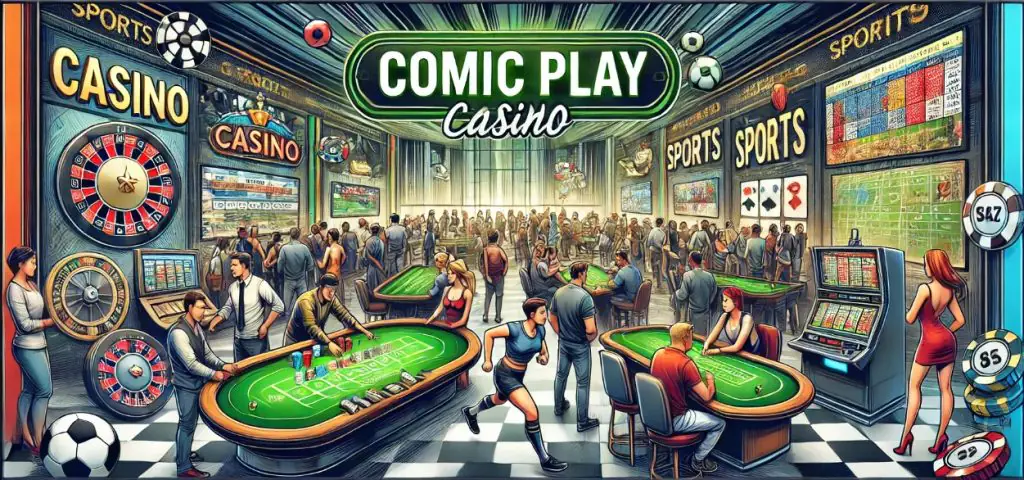A comfortable session is not a coincidence, but a set of simple settings that you make in advance. Five minutes of preparation gives you an hour of peaceful play without glitches or rush. What’s more, a well-thought-out checklist helps you keep up the pace without going over budget. If you plan to start today, bookmark Comic Play casino and follow the steps below: they are tailored to the usual rhythm of US players, USD, and evening time slots.🎛️🧭
⚡ Preparation Science: Studies in performance psychology show that proper pre-task preparation can improve focus by up to 40% and reduce decision fatigue by 35%. The five minutes you invest in setup deliver exponential returns throughout your entire session.
Basic principles of a comfortable session🎯
First, determine what you want from the next 20–40 minutes: to relax, complete the day’s quests, or advance in a seasonal event. When the goal is clear, you don’t “jump” between tasks and games, but move in a straight line. This reduces fatigue and eliminates unnecessary switching.
🎯 Goal Clarity Advantage: Neuroscience research reveals that clearly defined goals activate the prefrontal cortex more efficiently, reducing mental wandering by 50%. A single focused objective transforms scattered activity into purposeful progress.
Limit your time to stay focused ⏳
Set a strict timer: one 15-20 minute sprint or two short 10-minute sprints with a break in between. Short bursts keep your attention, and micro-breaks help you maintain a sense of control. When the timer goes off, it’s a sign to stop and take stock.
Set a daily budget in USD 💵
Decide in advance on an amount that is comfortable for you and stick to it. A budget is not a restriction, but a safeguard against impulsive decisions. Remember: a calm rhythm + a fixed limit = comfort and a clear head.
Choose a format: sprint or marathon 🏁
Sprint — for completing quick tasks and warming up. Marathon — for steady progress toward weekly/seasonal goals. To understand which is closer, focus on your current mood and free time in your schedule.
🧘 Mood-Format Matching: Psychological research on “flow states” shows that aligning activity intensity with current energy levels increases satisfaction by 60%. Listen to your body—tired evenings call for sprints, energized weekends suit marathons.
Device and connection🔧
A clear picture, stable internet, and accurate system clock directly affect comfort. Before you start, it’s worth going over the key points: screen, power, notifications, and connection.
Why this is critical right now 🧩
Even a small lag breaks your rhythm and knocks you out of your concentration. And one extra notification can interrupt a successful streak. That’s why technology is your ally: the quieter and more stable the background, the more enjoyable and productive your session will be.
📊 Interruption Impact: Studies from the University of California found that it takes an average of 23 minutes to fully regain focus after an interruption. One notification can cost you nearly half your session’s productivity—making “Do Not Disturb” mode essential, not optional.
Privacy and security🔐
Make sure your login is secure, your contact details are confirmed, and your backup codes are available. This saves time when re-authorizing and eliminates stressful situations.
A micro-step for security before you start
Open the settings — check 2FA activity, the validity of your email and phone number, and your recent login history. A minute and a half — and you can relax.
🔒 Security Peace of Mind: Cybersecurity experts confirm that 90 seconds of pre-session security checks can prevent hours of account recovery stress. This brief investment transforms anxiety into confidence, letting you focus entirely on enjoyment.
Expert quote on focus and risks 🗣️
“A comfortable session begins before you log in to the game: a clean screen, “Do Not Disturb” mode, and a clear time limit reduce cognitive load by 20-30%. The result is fewer impulsive actions and greater enjoyment of the process.”
Step-by-step instructions before starting ▶️
- Goal: choose your focus — quest of the day, seasonal progress, or short relaxation.
- Time: set a timer (for example, 18 minutes) and prepare a 3-minute break.
- Budget: set an amount in USD and note it down.
- Device: turn on “Do Not Disturb,” check the battery and headphones.
- Network: Make sure your Wi-Fi is stable and background downloads are closed.
- Interface: Adjust the window size/scale, check the font and readability.
- Session scenario: Choose a sprint or marathon, determine the games for the first wave.
- Finish ritual: plan a “gift collection” and a short debrief.
✅ Checklist Power: Aviation and surgical teams use pre-operation checklists to reduce errors by 80%. Applying this professional standard to gaming ensures consistent, stress-free sessions where nothing important gets overlooked.
Interface micro-adjustments for comfort 🎧
- 🔉 Lower system sound volume: pop-up alerts disrupt the rhythm and are distracting.
- 🔤 Font size: set it to 100-110% to avoid squinting and unnecessary movements.
- 📐 Window alignment: center the game area; the periphery is less distracting.
- 💬 Disable auto-scrolling in messengers: pop-up chats are the main enemy of concentration.
- 🌙 Light color correction: night mode in the evening reduces eye fatigue.
Practical tips that work every day 🔄
- Start with an easy task: quick success sets the tone for the entire session.
- Keep water nearby: it’s easier to take a micro-break when everything is at hand.
- Play in “two blocks”: first 10–15 minutes, then a break and a short finish.
- Write down mini-results: three lines after the session help you start faster tomorrow.
- Don’t switch gears often: fewer “jumps” mean clearer focus and more stable emotions.
- End the session with a ritual: collect rewards + mark your progress = a pleasant ending.
💧 Hydration Factor: Neuroscientists note that even mild dehydration (2% body water loss) can impair cognitive performance by 10-15%. Keeping water within arm’s reach isn’t just convenient—it’s a performance enhancer that maintains decision quality throughout your session.
Pros and cons of pre-setting🧮
- ✅ Reduced attention load: distractions are removed in advance.
- ✅ Stable pace: a pre-selected format (sprint/marathon) keeps you focused.
- ✅ Budget control: a fixed limit in USD protects against impulsive actions.
- ✅ Clear conclusion: the ritual of “collecting rewards + analysis” forms a habit.
- ❌ Discipline required: without a timer, it’s easy to get “stuck” and go overboard.
- ❌ Initial preparation takes time: 3–5 minutes before the start — not everyone likes it.
- ❌ Perfectionism is possible: the desire to “set everything up perfectly” distracts from the essence.
- ❌ “Do Not Disturb” mode: it’s easy to forget to turn it off and miss an important call.
A “healthy” environment for gaming 🪑
Proper posture and lighting are more important than they seem. The light should come from the side, and your back should be against the back of the chair. Every 15–20 minutes, take a 30–60-second break: look out the window, stretch, blink 10–15 times to moisturize your eyes. These little things keep you alert and reduce fatigue at the end of the day.
👁️ 20-20-20 Rule: Optometrists recommend the 20-20-20 rule: every 20 minutes, look at something 20 feet away for 20 seconds. This simple practice can reduce digital eye strain by up to 50% and significantly improve end-of-day comfort.
Comparison of session formats: sprint and marathon⚖️
To avoid arguing with yourself during the game, decide in advance which format is right for you today.
How to know if you’ve made the right choice ✅
If after 10 minutes you feel calm and in control and don’t feel the urge to switch, then you’ve chosen the right format. If, on the contrary, you feel restless, it’s better to shorten the session and come back later.

🎭 Self-Awareness Signal: Your 10-minute checkpoint is a form of “metacognition”—thinking about your thinking. Research shows that players who regularly check in with themselves make 35% better decisions and report 40% higher satisfaction levels.
Sound settings: background music and “silence”
Adjust the volume so you don’t get tired 🔊
Effects that are too loud quickly become exhausting. Choose a moderate level and, ifRetryClaude does not have the ability to run the code it generates yet.DContinuenecessary, turn off intrusive system sounds. If you like music, play tracks without lyrics — they compete less for your attention.
🎵 Auditory Science: Cognitive research shows that music with lyrics activates language processing centers, competing with decision-making functions. Instrumental music at 50-60 decibels creates an optimal “ambient noise” that can enhance focus by up to 15% compared to complete silence or loud environments.
Common situations and quick solutions
What to do if your pace is “falling apart” 🧩
If your connection starts to lag, pause and restart your router/modem. If you start to rush, stop for a minute, take a deep breath, check the timer, and return to your plan. If you want to “change everything,” don’t change the format right away: it’s better to finish the current wave and then replan.
🔧 Recovery Protocol: Having a predefined troubleshooting plan reduces stress response by 40%. When problems arise, your brain doesn’t panic—it simply executes the protocol. This emotional stability is the difference between a minor hiccup and a ruined session.
Motivation without overheating🏆
The secret to sustained motivation in Comic Play is simple: add small achievements to each session. Let it be one completed quest or one neat progress bar. This builds a sense of forward movement — without the rush and disappointment.
🎯 Micro-Win Strategy: Behavioral psychologist BJ Fogg’s research on habit formation shows that celebrating small wins releases dopamine in controlled amounts, creating sustainable motivation without the crash that follows large, infrequent rewards. One quest completed is one win banked.
How to end a session correctly ✅
Before leaving, check the gift tabs, make sure nothing is “burning out,” and make three notes: what worked, what got in the way, and what to improve tomorrow. This short ritual records the experience and makes the next session predictably comfortable.
Session End Checklist
- ☑️ Collect all unclaimed rewards from bonus tabs
- ☑️ Check for expiring promotions or time-sensitive offers
- ☑️ Note: What worked well this session?
- ☑️ Note: What created friction or distraction?
- ☑️ Note: One thing to improve tomorrow
- ☑️ Turn off “Do Not Disturb” mode
📝 Reflection Power: Journaling research from the University of Texas shows that spending just 3 minutes reflecting on experiences improves learning retention by 23% and performance improvement by 18%. Your three-line notes aren’t busywork—they’re optimization accelerators.
Final Takeaway
A comfortable session is about a clear goal, a short timer, a fixed budget, and quiet technology. Customize the interface to suit your needs, keep water handy, and finish with a “gather + review” ritual. And remember: the simpler the system, the gentler the emotions and the greater the pleasure. If you’re ready to put everything into practice, you already have a reference point: Comic Play casino. Set it up once, and every subsequent start will be easier, calmer, and more productive.
🚀 Your Next Step: Don’t wait for the “perfect moment” to implement these practices. Start with just three elements today: set a timer, enable “Do Not Disturb,” and choose one clear goal. These three actions alone will transform your next session. The complete system will build naturally from there, one comfortable session at a time.
💡 Remember: Comfort isn’t about perfection—it’s about consistency. A “good enough” setup that you actually use beats a perfect setup that feels too complicated to implement. Start simple, stay consistent, and let comfort become your new normal. Your future self will thank you for the five minutes you invest today.

